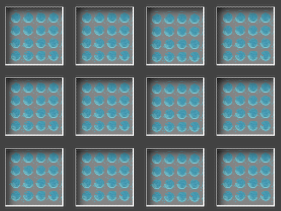Two-dimensional transition-metal dichalcogenides (TMDs) and TMD heterostructures could be useful, e.g., for electronics and optoelectronics applications. However, their use has been hampered by the fact that their synthesis is difficult to scale. There are approaches based on epitaxial growth to obtain single-crystalline monolayer TMDs on single-crystalline hexagonal substrates, e.g., sapphire. (Epitaxial growth means that new crystalline layers are formed with a particular orientation relative to the lattice of a crystalline base layer.) However, the preparation of large-scale 2D heterostructures remains challenging. In addition, the infrastructure in the semiconductor industry, where 2D TMD materials could be useful, is based on silicon substrates, not on sapphire.
Jin-Hong Park, Sungkyunkwan University, Suwon-si, South Korea, Sang-Hoon Bae, Washington University in St. Louis, MO, USA, Jeehwan Kim, Massachusetts Institute of Technology (MIT), Cambridge, USA, and colleagues have developed a method based on confined growth that allowed the team to obtain wafer-scale 2D WSe2 arrays and 2D MoS2/WSe2 heterostructures on arbitrary substrates such as silicon wafers. The researchers used a patterned SiO2 mask to create a grid of “trenches” or “pockets” on a silicon wafer. Then they used vapor deposition to grow layers of the desired 2D materials.
The “pockets” on the silicon substrate confine the growth of the 2D TMD material, leading to single-crystalline growth even if there is no epitaxial relation between the 2D material and the silicon wafer, according to the researchers. The team found that the “confined” TMD layers showed excellent electrical performance that is comparable to that of mechanically exfoliated TMD flakes.
- Non-epitaxial single-crystal 2D material growth by geometric confinement,
Ki Seok Kim, Doyoon Lee, Celesta S. Chang, Seunghwan Seo, Yaoqiao Hu, Soonyoung Cha, Hyunseok Kim, Jiho Shin, Ju-Hee Lee, Sangho Lee, Justin S. Kim, Ki Hyun Kim, Jun Min Suh, Yuan Meng, Bo-In Park, Jung-Hoon Lee, Hyung-Sang Park, Hyun S. Kum, Moon-Ho Jo, Geun Young Yeom, Kyeongjae Cho, Jin-Hong Park, Sang-Hoon Bae, Jeehwan Kim,
Nature 2023.
https://doi.org/10.1038/s41586-022-05524-0


